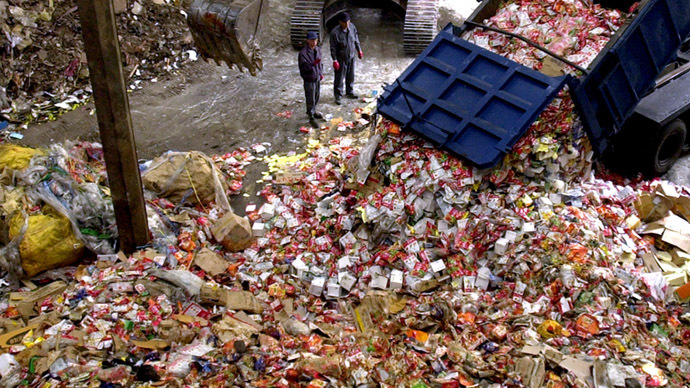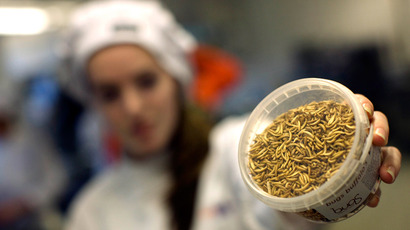Wasted food among top greenhouse gas emitters – UN report

One-third of all food produced globally remains uneaten and gets thrown away, making the wastage the world’s third-biggest source of carbon dioxide emissions after industry in the US and China, a new UN study reveals.
A total of 1.3 billion tons of food a year, worth $750 billion,
is thrown away, emitting 3.3 billion tons of carbon dioxide,
according to data collected by the UN’s Food and Agriculture
Organization.
"We simply cannot allow one-third of all the food we produce
to go to waste or be lost because of inappropriate practices,
when 870 million people go hungry every day," says the FAO’s
Director-General, José Graziano da Silva.
The data is part of the “Food Wastage Footprint” report issued
Wednesday. The study is a first attempt at analyzing the impact
of uneaten food on the global environment.
In the industrialized nations most of the blame for food ending
up as garbage lies with consumers buying more than they actually
need, while in the developing world it’s mostly lame agricultural
techniques which result in the harvest not reaching the people.
Overall, 54 percent of total wastage is at the pre-processing
stage, with potential food being lost during post-harvest
handling and storage. The remaining 46 percent is lost
during processing, distribution or consumption.
The food that’s destined for the bin is being produced on 30% of
all agricultural land, meaning this land is being stripped of its
biodiversity to make way for farming.
Wasted food production also takes up 250 cubic kilometers of
water each year. The water waste thus is equivalent to the annual
water discharge of the Volga River, or is three times the volume
of Lake Geneva.
"Food wastage reduction would not only avoid pressure on
scarce natural resources but also decrease the need to raise food
production by 60 percent in order to meet the 2050 population
demand," the FAO report says.
A 120-page program to tackling the food wastage is enclosed to
the report. The suggestions include better shopping planning for
consumers to avoid over-buying. Businesses are being encouraged
to make food donations to charities. Industries are expected to
search for alternative ways of doing away with food waste for it
not to end up rotting in landfills.
Increasing concentrations of greenhouse gases in the atmosphere
are believed to be triggering global warming. The issue remains
highly divisive, however, with some critics questioning the
extent to which climate change is caused by humankind.














